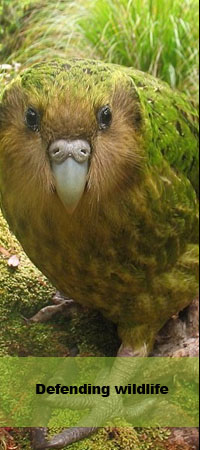|
Here is why:
- Hundreds of land mammals face the threat of extinction due to hunting for food or medicinal use. This threats has largely increased in the last 20 years due to the economic rise of China.
The latest Living Planet Report 2016, published by WWF in collaboration with Global Footprint Network and Zoological Society of London, shows that the overexploitation of natural resources due to human activities could cause wildlife worldwide to decline by 67% by 2020.
- More than one hundred plant and animal species have gone extinct in the last 20 years. For examples, the last Vietnamese rhino, a subspecies of the Javan rhinoceros, was shot by a poacher in 2009 and the Rabbs' Tree Frog (Ecnomiohyla rabborum), is likely extinct in the wild. This frog, found in the mountains of central Panama, was seen in 2007 for the last time. Extinct species around the world including insects, birds, reptiles, amphibians, and fishes.
- Most species are vanished from most of their historical range due to severe habitat loss and fragmentation. Defaunation (loss of animals from ecological communities) is global and has increased especially in Southeast Asia, Europe, part of Africa and South and North America.
- More plants and animals donít have their range protected and are currently not classified as threatened. Nowadays, those species have smaller ranges due habitat loss. Therefore, a very large number of those species are at high risk of extinction as ESI has observed in many regions of the world. For example, more than 80% of Madagascarís forests (lemurís vital habitats) have been cleared, leaving only around 60,000 km2 of viable habitat for lemurs. As a result, 93 of 111 existing species of lemurs are threatened to extinction.
- More than 50,000 plant and animal species could suddenly disappear, most of them surviving in extremely small range or/and harsh modified natural habitats. The passenger pigeon (Ectopictes migratorious) from North America was an abundant bird (2-5 billion individuals) that became extinct in blink of an eye. Causes included the shrinking stage of its naturally oscillating demography and this coincided with a strong hunting pressures imposed by human.
- Coral catastrophe worldwide continues. Pollution, global warming, coastal destruction, overfishing, lack of marine protected areas and other man-made factors are pushing the coral reef ecosystems to the brink of an ecological disaster. ESI estimates that coral reef cover has declined by 60 percent in the past 30 years.
- Currently, less than three percent of all philanthropic giving and less than two percent of gross world product go to defending nature, endangered species, forests, and oceans! Thatís a mere support considering the large scale of biodiversity loss around the globe. To curb significantly biodiversity loss, we need to increase philanthropic giving (donations) and government support. Further, financial flows must be redirected worldwide. Sustainable financial flows that support conservation and sustainable ecosystem management are an essential enabling condition for both preserving natural capital and promoting resilient and sustainable markets. Donate now
Links
|









